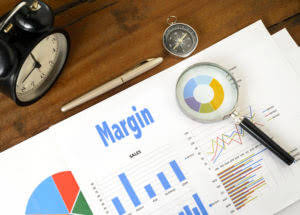We expect purchase volumes to grow a further 15 percent in 2025 to 1.6 trillion, a further upgrade of $52 billion from our prior forecast. While we believe home sales are likely to stay subdued in the near term, listings of homes for sale have been trending upward in recent months and have outpaced sales. The growth accounting services for startups in listings is consistent with recent trends in the Fannie Mae Home Purchase Sentiment Index® showing improved sentiment around home-selling conditions. However, given the ongoing affordability challenges and elevated mortgage rates, this growth in listings is not translating into a one-for-one increase in sales.
Cash flow metrics
Unlike the cost of goods sold, they are not necessarily needed to produce the goods that are sold or to deliver the services promised. They include costs related to the supporting and operational side of business, such as sales and marketing, research and development and general and administrative tasks. Moreover, it provides you with an opportunity to track your actual performance versus your expected budget on a monthly basis, which helps you cut costs (if needed) and anticipate to potential cash dips months ahead. The profit and loss (or income) statement is basically an overview of all the income and costs your company has generated over a specific period of time and shows you whether you are profitable or not. You can use this template to create the documents from scratch or pull in information from those you’ve already made. The template also includes diagnostic tools to test the numbers in your financial projections and ensure they are within reasonable ranges.
- Therefore, it could be useful to complement the top down method with the bottom up approach.
- Anneke Thompson, CreditorWatch chief economist, said the very weak retail sales figures in March would be a relief to the RBA and reduced the threat of “sticky inflation” in the goods category.
- Based on these metrics the company will have a good idea of potential sales, of course constrained by the budget available for online advertising.
- The bottom up approach is less dependent on external factors (the market), but leverages internal company specific data such as sales data or your company’s internal capacity.
How To Build a Robust Startup Financial Projection That Attracts Investors
Financial projections are the most common way to present financial information to investors. EY refers to the global organization, and may refer to one or more, of the member firms of Ernst & Young Global Limited, each of which is a separate legal entity. Ernst & Young Global Limited, a UK company limited by guarantee, does not provide services to clients. For more information about our organization, please visit ey.com. Equity investors take more risk by investing money in a company in exchange for shares, meaning they could lose it all. Since an equity investor becomes a shareholder when he/she invests in your company you will (partly) lose control of the firm.
- Ready to invest in a CRM to help you increase sales and connect with your customers?
- Well, I think it is smart for an entrepreneur to create a set of projections before they start a business to understand what they are getting themselves into and what it will take to break even and generate a profit.
- “The underlying trend in retail spending remains very weak, with spending up just 0.8 per cent on a year earlier. Considering the brisk pace of population growth, this is a very soft trend,” he said.
- This press release contains forward-looking statements and information that reflect Dr. Ing. h.c.
- Most important is that your spending on operating expenses aligns with your company strategy.
- Headline CPI grew 0.4 percent over the month for the second month in a row and grew 3.5 percent compared to a year ago, an acceleration of three-tenths from February.
What’s the difference between top-down and bottom-up forecasting?
NAB is first to report on Thursday, and it is forecast to deliver a half-year cash profit of $3.6 billion, down around 13 per cent from the same period last year. The RBA estimates around 5 per cent of mortgage borrowers are spending more on their repayments and essential living expenses than they earn, and more than 2 per cent could run out of savings by the end of next year. CBA’s revised interest https://thetennesseedigest.com/navigating-financial-growth-leveraging-bookkeeping-and-accounting-services-for-startups/ rate forecasts will feed into the debate about the profitability of Australia’s banking sector. “Our expectation for below‑trend economic growth to continue over 2024 means that the labour market will further loosen and wages pressures will moderate,” he wrote on Tuesday. But she said spending on services was still driving inflation — and services inflation was less impacted by monetary policy.
In October, you want to see what you’re projected to do through the beginning of the next year, not just over the last few months of the current year. Once you’ve reviewed the projections and drawn your analysis, you can share it with potential investors, lenders, or stakeholders. If you’re building projections for a new business, this will involve some estimations and guesswork.
Free Cash-Flow Forecast Templates
Historically financial modeling has been hard, complicated, and inaccurate. The Finmark Blog is here to educate founders on key financial metrics, startup best practices, and everything else to give you the confidence to drive your business https://thebostondigest.com/navigating-financial-growth-leveraging-bookkeeping-and-accounting-services-for-startups/ forward. Whether you’re starting a new business or making plans for an existing one, creating financial projections will give you a significant advantage. For some of the outputs supporting calculations and schemes are required.

